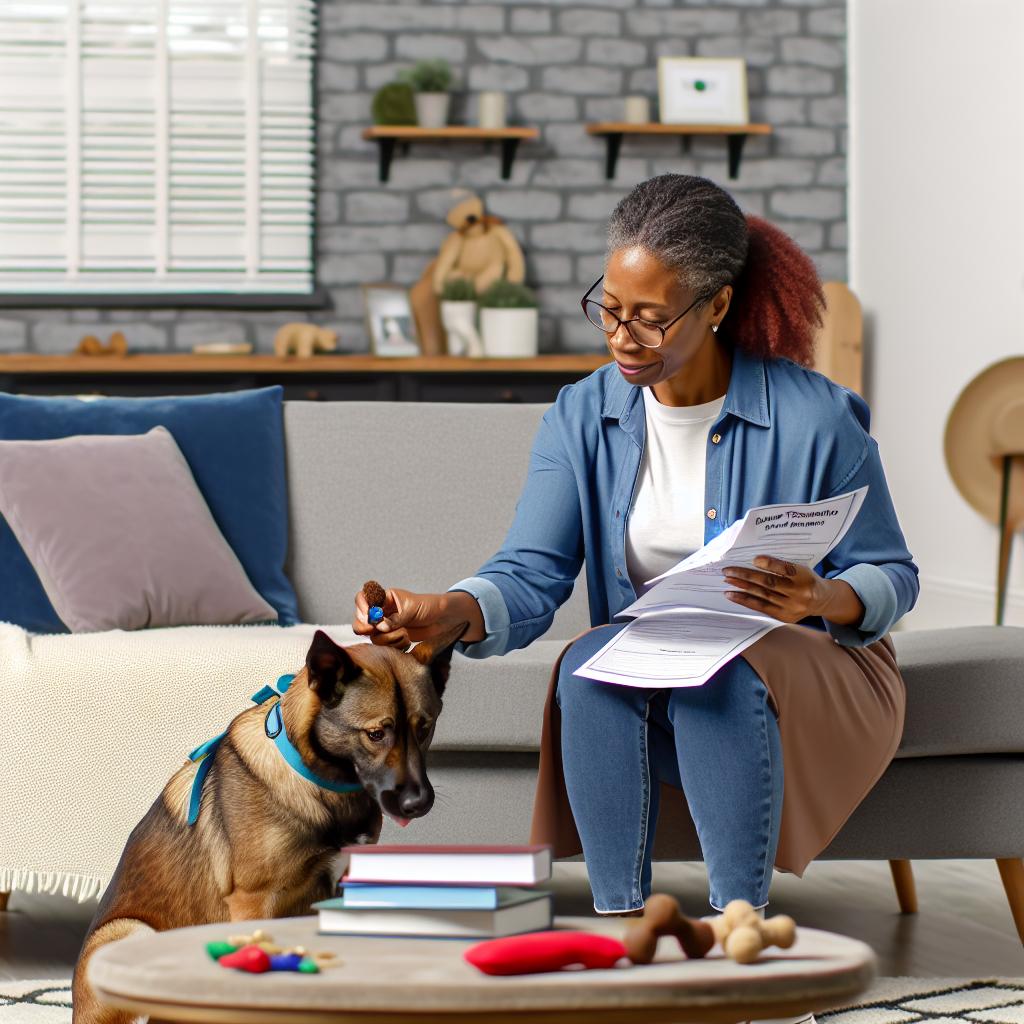
Separation anxiety is a widespread issue experienced by many dogs. It arises when a dog becomes distressed due to the absence of their owner, manifesting in different behaviors such as barking, howling, chewing, or pacing. Understanding the root cause of separation anxiety is the first step in helping your pet overcome it and improve their quality of life.
Dogs exhibit various signs when they experience separation anxiety. Recognizing these symptoms is crucial to addressing the problem effectively. Some of the common symptoms include:
Vocalization: Dogs may bark or whine continuously, primarily when their owner is not present. This vocalization is often a dog’s way of expressing distress and attempting to call their owner back.
Destructive Behavior: Chewing furniture, doors, or window sills is another sign of separation anxiety. Dogs may engage in destructive behavior to cope with their stress or attempt to escape from the confines of the home.
House Soiling: Despite being house-trained, some dogs may urinate or defecate indoors when left alone. This behavior is often linked to anxiety rather than a lapse in training.
Pacing: Another symptom includes repetitive walking or trotting along a fixed path when the dog is left alone. This behavior indicates the dog’s anxiety and inability to relax in the absence of their owner.
It is essential to distinguish these behaviors from those caused by insufficient training, boredom, or other medical conditions. If your dog shows these symptoms, consider consulting a veterinarian or an animal behaviorist for a comprehensive assessment.
Addressing separation anxiety involves employing strategies designed to make your dog feel more comfortable when left alone. Here are some approaches to consider:
One effective strategy is to gradually get your dog accustomed to being alone. Desensitization involves starting by leaving your dog alone for short periods, then slowly increasing the duration as they become more comfortable. This process should be gradual and consistent to ensure success, with attention to your dog’s response at each stage.
Designate a specific area in your home for your dog to feel secure. This safe space should have features of familiarity, comfort, and distractions, such as toys or items that carry your scent. Over time, your dog can associate this area with positive experiences, making it less likely to feel anxious when left alone.
Providing your dog with regular exercise and mental stimulation is crucial in managing separation anxiety. Physical activities like playing fetch, going for walks, and engaging in interactive games can expend energy and reduce anxiety levels. Moreover, puzzle toys and treat dispensers serve as excellent ways to keep your dog’s mind active and distracted while you’re away.
Behavioral training can play a pivotal role in managing separation anxiety. Consider enrolling your dog in a training program where positive reinforcement is used. This method involves rewarding desired behavior, which encourages a calm state when you leave.
Commercially available calming products such as collars, sprays, and diffusers can help alleviate anxiety. These products often contain pheromones that mimic those produced by nursing female dogs, providing a calming effect for your pet. While not a cure, calming products can be a useful adjunct to behavioral strategies.
In persistent cases, seek assistance from a professional dog trainer or behaviorist who specializes in treating separation anxiety. A professional can develop a tailored behavior modification plan for your pet based on their specific needs and responses to previous interventions.
For severe anxiety, a veterinarian may prescribe medication to help manage your dog’s symptoms. Medication should always be used as part of a broader behavior modification program rather than as the sole solution. It’s important to follow your veterinarian’s recommendations and monitor your dog’s response to any medication provided.
Helping a dog with separation anxiety is a process that requires consistency and patience. Progress might be slow, but with a dedicated approach, most dogs can learn to feel secure when left alone. Establishing a routine can help reassure your dog that departures are temporary and that you will return.
For more detailed guidance, consider reaching out to animal behaviorists or veterinary professionals who specialize in canine behavior. Working collaboratively with these experts can provide more specialized strategies tailored specifically to your pet’s needs.
While the journey to improvement might be gradual, your efforts will ultimately enhance your dog’s well-being and your quality of life together. Rest assured, through understanding and implementing effective strategies, you can help your dog overcome separation anxiety and lead a more relaxed, happy life.